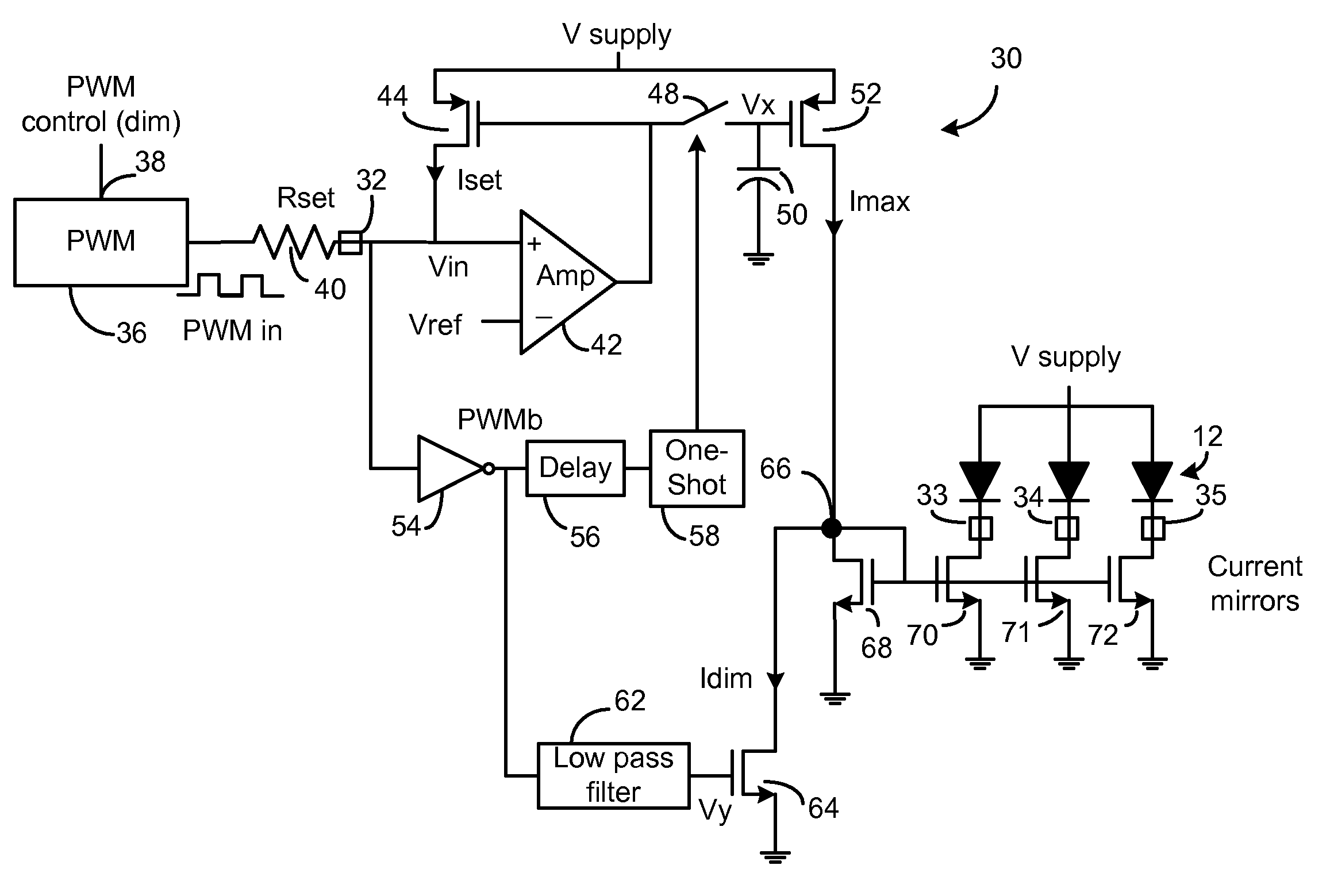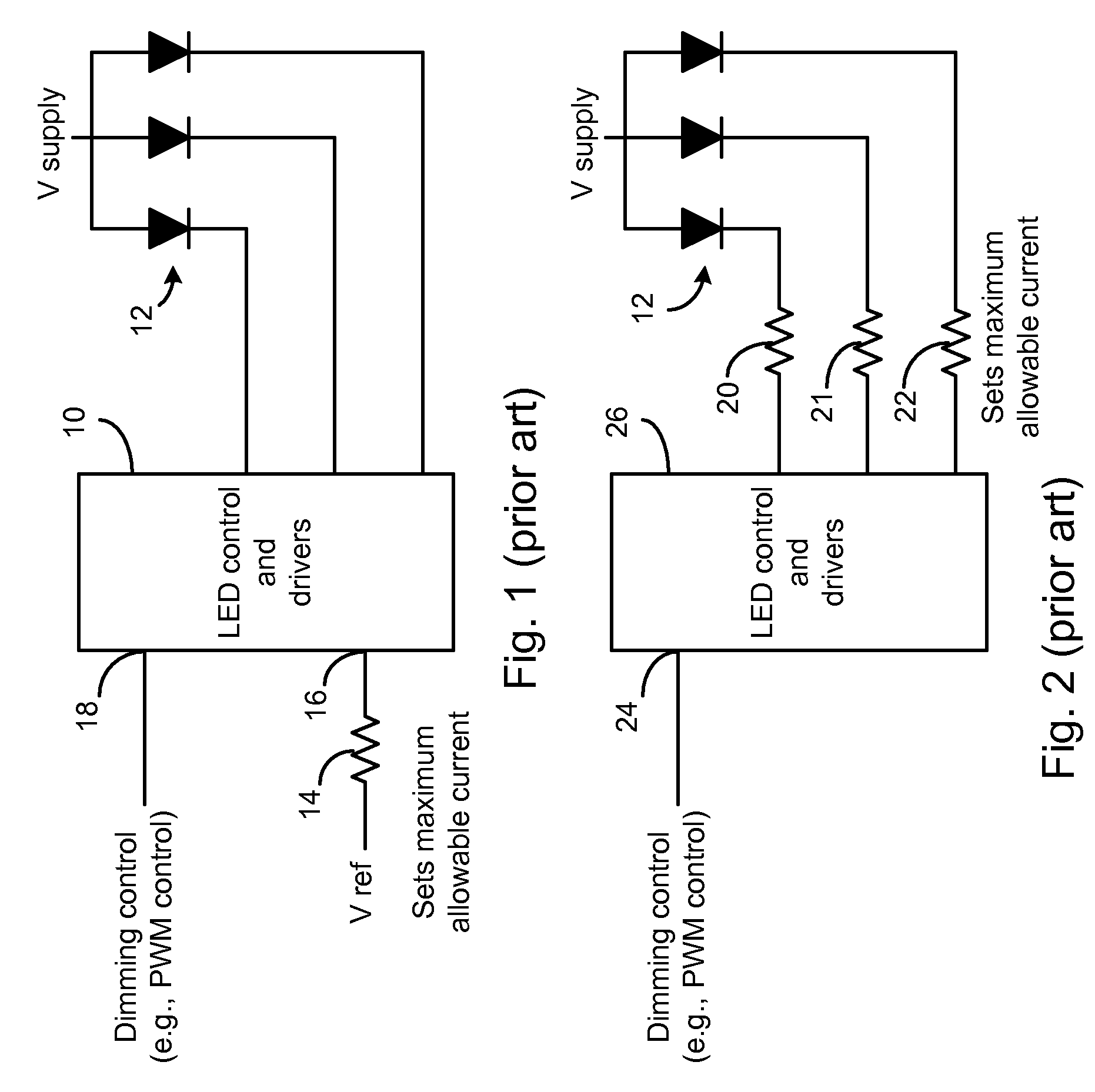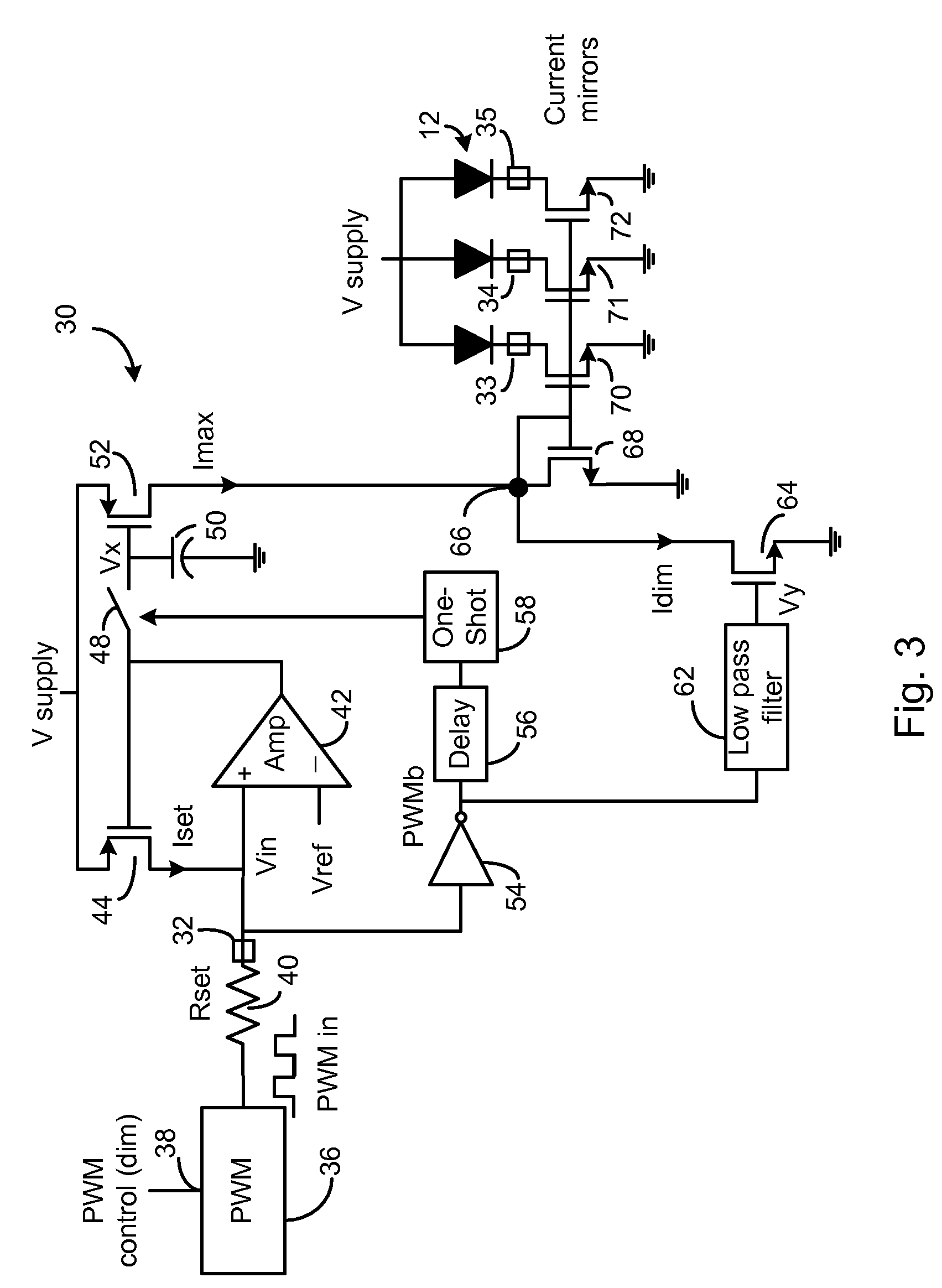LED Controller IC Using Only One Pin to Dim and Set a Maximum LED Current
a technology of led controller and controller, which is applied in the direction of instruments, light sources, electrical equipment, etc., can solve the problems of reducing the reliability of led or damage, incurring extra cost and board space penalties, and increasing the sink current , the effect of reducing the drive signal
- Summary
- Abstract
- Description
- Claims
- Application Information
AI Technical Summary
Benefits of technology
Problems solved by technology
Method used
Image
Examples
Embodiment Construction
[0022]The LED driver IC of the present invention will be described with respect to FIGS. 3 and 4. The IC 30 package includes one pin 32 for both setting the maximum current through the LEDs 12 and for controlling the brightness of the LEDs. The IC 30 package also includes pins 33-35 for connection to the cathodes of the LEDs 12. In another embodiment, the components of the IC driver may be selected so that the pins 33-35 are connected to the anodes of the LEDs 12, and the cathodes are directly connected to ground.
[0023]Additional pins (not shown) on the IC 30 package are connected to the supply voltage and to ground.
[0024]A conventional external PWM source 36 outputs a pulse train having a frequency typically between 100 Hz-1 MHz, where the duty cycle (ratio of on time versus total time) determines the brightness levels of the LEDs 12. An oscillator internal to the PWM source 36 determines the frequency. Varying a control signal 38 into the PWM source 36 varies the duty cycle. The c...
PUM
 Login to View More
Login to View More Abstract
Description
Claims
Application Information
 Login to View More
Login to View More - R&D
- Intellectual Property
- Life Sciences
- Materials
- Tech Scout
- Unparalleled Data Quality
- Higher Quality Content
- 60% Fewer Hallucinations
Browse by: Latest US Patents, China's latest patents, Technical Efficacy Thesaurus, Application Domain, Technology Topic, Popular Technical Reports.
© 2025 PatSnap. All rights reserved.Legal|Privacy policy|Modern Slavery Act Transparency Statement|Sitemap|About US| Contact US: help@patsnap.com



